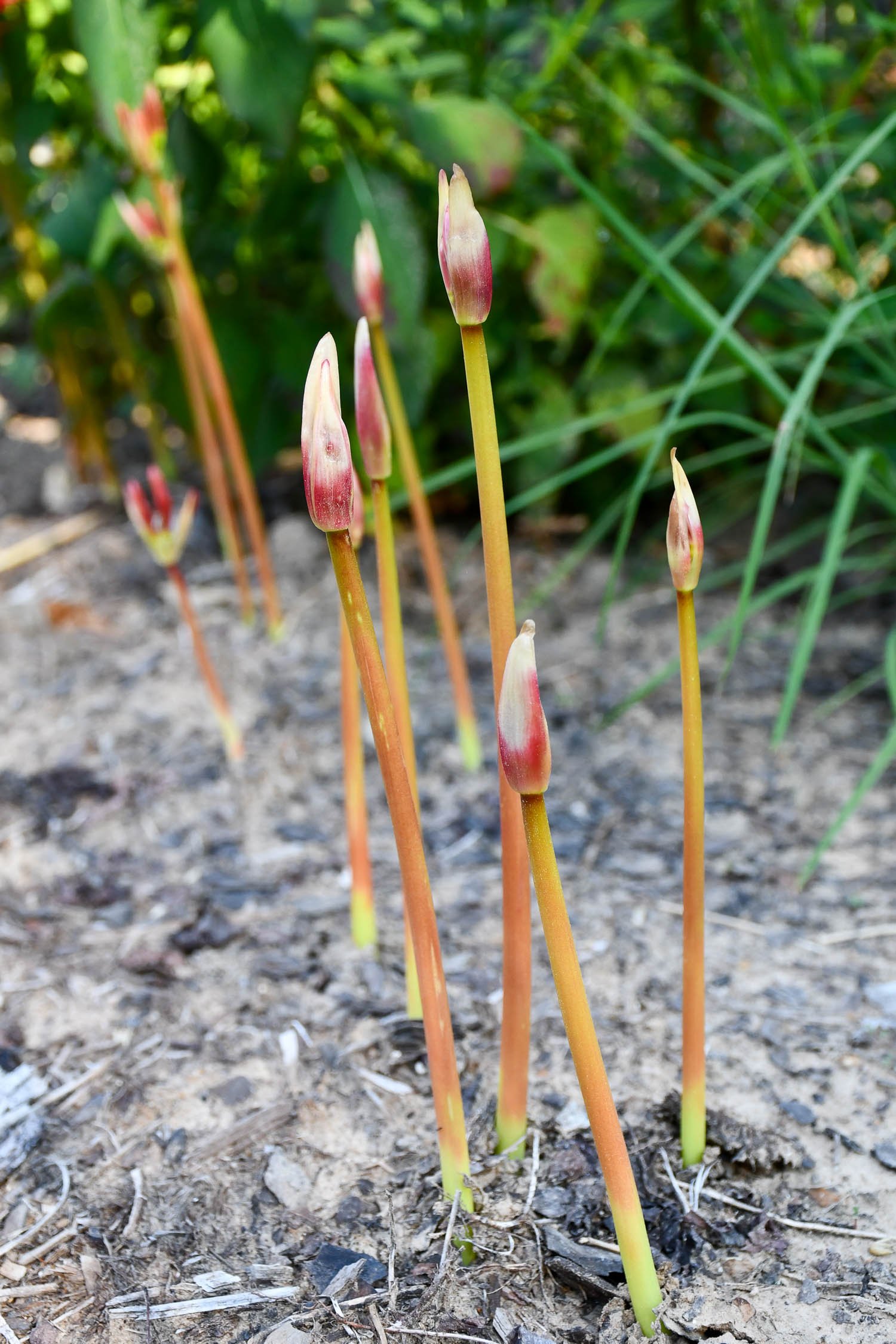It’s finally autumn, and I certainly am celebrating this year after our torrid summer. It’s amazing how different the garden looks. A few rains, cooler night temperatures, and shorter days make a world of difference on plant growth and my sanity.
After such a harsh summer, it’s a miracle that plants survived. Geophytes are fortunate, having waited out the worst of it dormant in the ground. And, for me there is no better harbinger of autumn than red spiderlilies.
I grew up with Lycoris radiata back in Tennessee where I heard them called naked ladies since they bloomed sans foliage. We had several massive clumps on the south side of our house that were so old they didn’t flower well. I never really appreciated them for what they were, a plant that could take the worst of summer and pop up days after a rain. To me they were old fashioned and not new and cutting edge.
My tastes have changed in the fifteen years since I left home. I’ve learned that not everything new is good and to see a plant for what it’s truly worth. I now have a hefty collection of Lycoris bulbs. They have come from three locations near our home.
A few originated here at Ephemera Farm. One of the joys of buying a new property is discovering plants that aren’t visible when the closing paperwork is signed. The fall after we moved into our log cabin, a single inflorescence emerged along the east fencerow between barbed wire and a lone water oak. Even from almost 300 feet away I could make out the coral red amongst the shadows. Shaded out for years the bulbs had sat there quietly, barely photosynthesizing enough to sport a flower let alone stay alive. Once more rains came, the foliage appeared in a neat row following the fence line. I dug them and moved them to a spot closer to the house. I counted 60 bulbs.
Another 200 bulbs came from near an old oak on a backroad that likely was some old home place. I’m glad I got them when I did. The oak and the surrounding forest are now gone as they clearcut the woods this past spring.
And, I noticed some growing along the fencerow of one of our neighbor’s property four years ago. I asked him if I could dig the clump, and he obliged. I counted 258 bulbs from what I dug, save for the handful I gave him as a thank you.
So, by my count I’ve planted at least 500 Lycoris radiata in my time here, and this time of the year I love to see the flowers of my labor. Where I found them is a testament to just how tough these bulbs are. Most of the Lycoris radiata in the southeast are triploid and thus labelled the variety Lycoris radiata var. radiata. A tripled chromosome count means that they don’t produce seed, but that saved energy is diverted back into the plant for vigor.
For now I’ve had them lined out on either side of the front pathway between the double fence surrounding the patch. They don’t all flower at once, which is both a blessing and a curse. The good is that I get to enjoy them for over a month’s time as the bulbs hydrate and spring forth, their scapes rising in bud like a candle with a waxing flame. But, the bad is there inevitably are gaps. I wanted more of a shock and awe effect with their bloom. I mean can you imagine over 500 Lycoris radiata in flower at once? I have seen pictures of understories that look like a crimson tide. And, as I have begun planting the front of the patch with more perennials, I find the Lycoris more difficult to see. Also, it’s a pain to dig into dormant bulbs all the time.
I’m leaning toward moving them into the grassy areas in the orchard, a space where I dominantly have reds, pinks, and yellows. And, to help me decide, this evening I picked a handful of Lycoris blooms, pried the turf’s soil open with my soil knife, and stuck the stems in to get a sense of what they would look like in this space. I stood back and was happy with the result.
And, come a cold winter day when I’ve forgotten just how hot summer is, I’ll move the bulbs with their green and gray foliage to this space to enjoy the flowers for many autumns to come.


